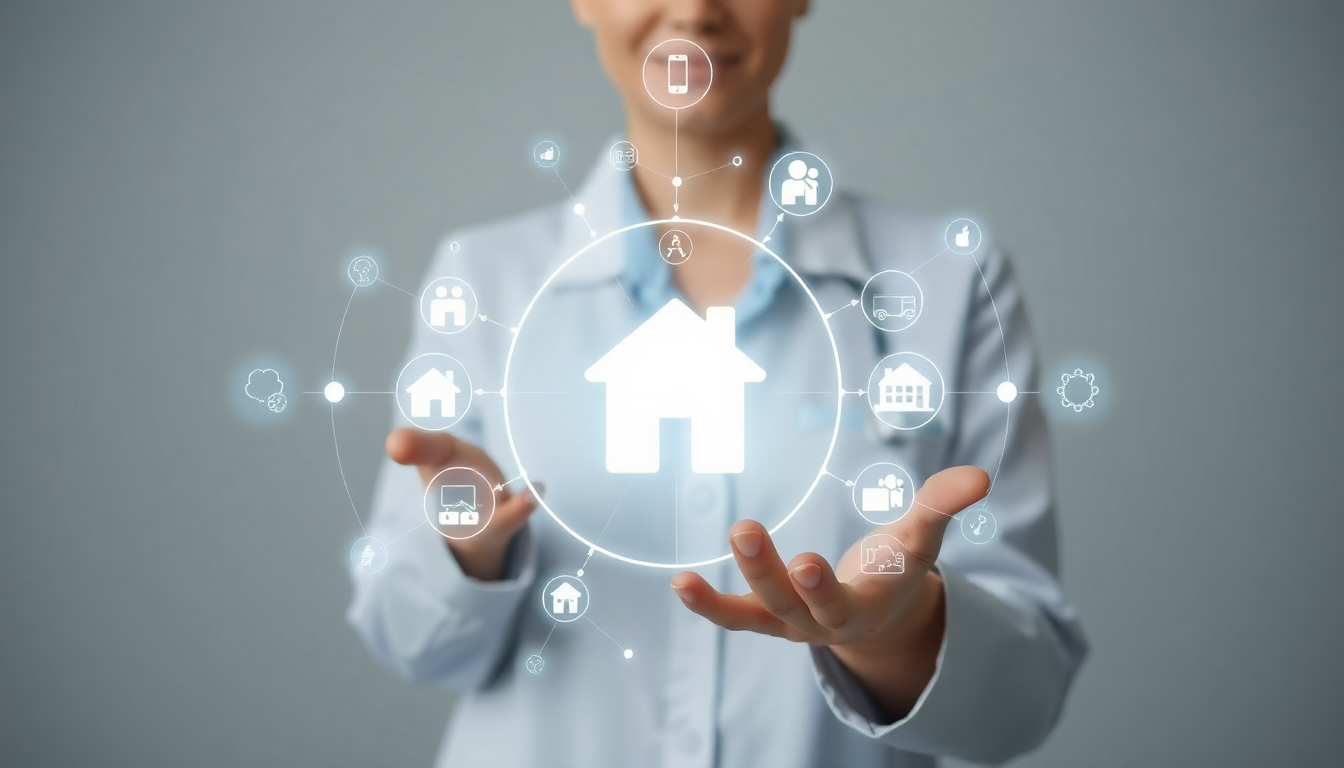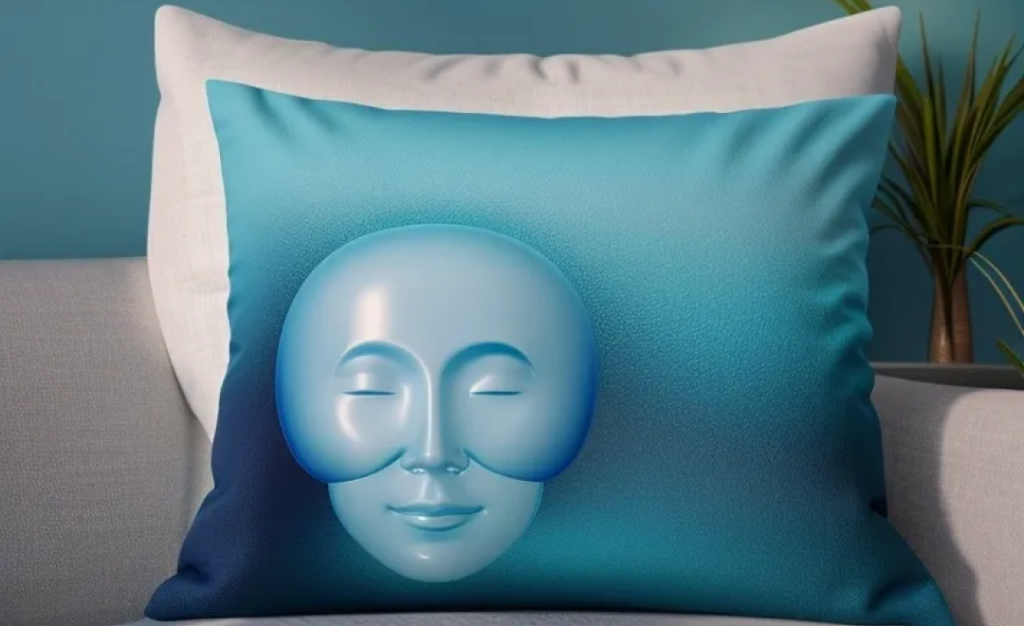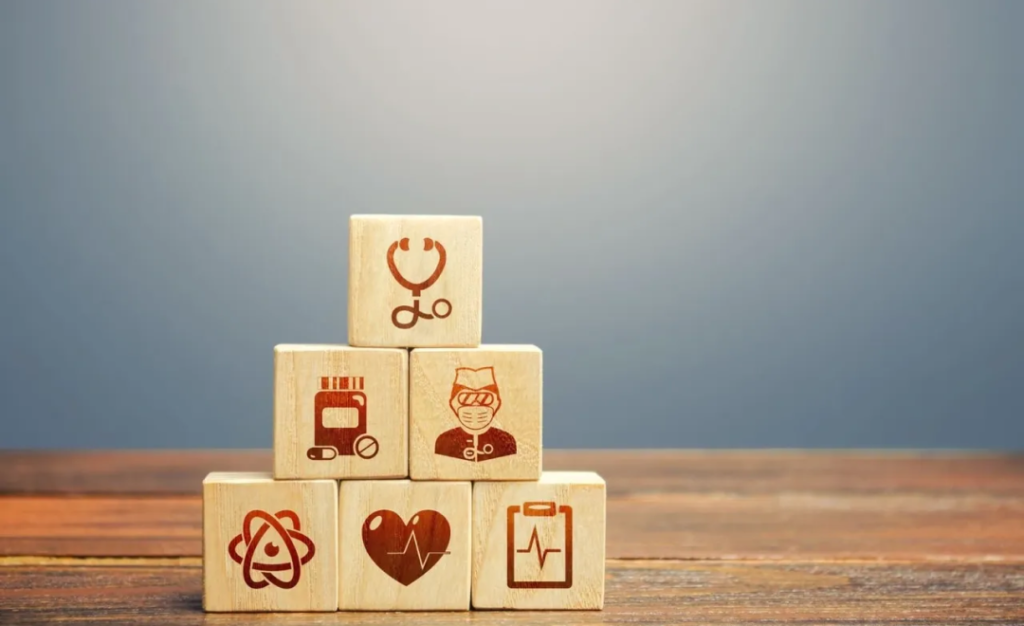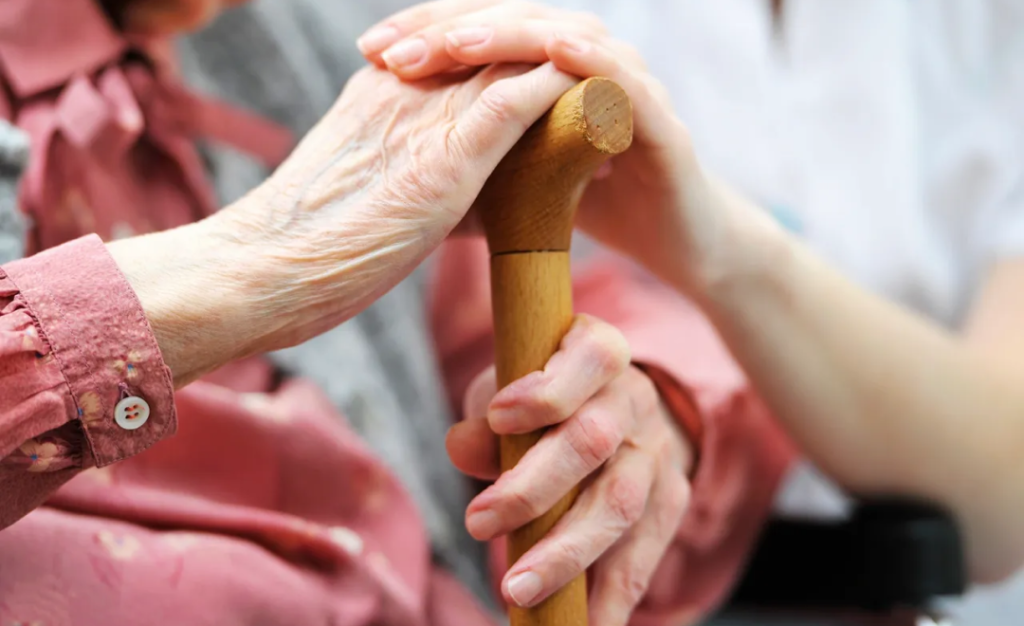The Care Technology Ecosystem: Integrating Solutions for Better Outcomes

The world of care is constantly evolving, and technology has become a key driver in improving the quality and efficiency of care services. As the sector faces increasing demands from an ageing population, limited resources, and stretched staffing, technology provides an opportunity to alleviate these pressures while delivering better outcomes for service users. The key, however, lies not in adopting standalone tools but in building an interconnected ecosystem where various technologies complement each other.
In this blog, we will explore how the care technology ecosystem can integrate solutions such as fall detection, electronic care planning, and AI-driven analytics to revolutionise care delivery. We’ll also highlight innovative solutions like the Nobi Smart Lamp, which plays a crucial role in preventing and detecting falls, a significant challenge in elderly care. Let’s delve into how integrating these technologies creates a seamless, efficient, and intelligent care environment.
The Need for an Integrated Care Technology Ecosystem
Care technology is not new, but it is advancing rapidly. From telecare systems that monitor safety remotely to AI tools predicting health risks, the potential is immense. But the care sector often struggles to link these technologies into a unified system. Siloed systems can mean carers are left with fragmented information, making it difficult to provide cohesive care.
An integrated care technology ecosystem connects the dots, ensuring that all data is shared intelligently and automatically between systems. This holistic approach leads to better care, as staff can rely on up-to-date information and streamlined processes. The benefits extend beyond carers; service users enjoy improved safety, personalised care, and faster responses in emergencies. Ultimately, the vision for care technology should not be about isolated tools but about building a connected and coordinated framework.
Key Technologies in a Unified Care Ecosystem
Electronic Care Planning (ECP) Systems
Electronic care planning (ECP) systems have become the backbone of care services, replacing outdated paper-based methods. ECP systems allow carers to track and update residents’ care plans in real-time, ensuring consistency and clarity in care delivery. They streamline communication between staff and managers, helping to reduce errors and delays in care.
The true potential of ECP systems emerges when they are integrated with other technologies in the care environment. For example, when paired with tools like fall detection or telehealth systems, ECP systems automatically update and share critical information, enabling carers to take immediate action when necessary. This seamless exchange of data reduces the administrative burden on staff, allowing them to focus on delivering high-quality, personalised care.
Telecare and Telehealth Solutions
Telecare and telehealth are powerful solutions that allow for remote monitoring of residents’ wellbeing. Telecare systems include devices like emergency alarms, sensors that detect movement, and panic buttons, ensuring that carers are notified when immediate assistance is needed. Telehealth, on the other hand, focuses on monitoring health metrics such as blood pressure, heart rate, and glucose levels. Both systems enable early detection of issues, reducing hospital admissions and emergency callouts.
Integrating telecare and telehealth solutions into the wider care ecosystem enables intelligent data sharing, giving carers a comprehensive overview of each resident’s health. For instance, real-time health data from telehealth devices can automatically update an ECP system, ensuring care plans are always up to date with the latest health information.
Assistive Technologies: A Focus on Fall Prevention
Falls remain one of the most significant risks in elderly care. Every year, thousands of older adults suffer falls that lead to injury, hospitalisation, long-term disability and even death. This is where assistive technologies like the Nobi Smart Lamp come in. The Nobi Smart Lamp uses advanced optical sensors and AI to detect falls instantly. Not only does it alert carers the moment a fall occurs, but it also monitors residents’ movement patterns to help predict and prevent future falls.
What sets the Nobi Smart Lamp apart is its ability to integrate with other systems. It can push fall detection data directly to care planning software, ensuring that carers are immediately notified, and the incident is automatically recorded. This eliminates the need for manual data entry, saving time and ensuring that the care plan is updated in real time. The lamp’s predictive capabilities also provide valuable insights into fall risks, allowing carers to adjust care plans proactively to prevent future incidents.
Artificial Intelligence (AI) and Data Analytics
AI has the potential to revolutionise care by providing predictive insights based on vast amounts of data. In a care environment, AI can analyse information from various systems—such as telecare devices, wearables, and ECP systems—to identify patterns and predict potential health risks. For example, AI can monitor residents’ health metrics and predict who is at risk of falls, pressure ulcers, or hospitalisation.
When integrated into the care technology ecosystem, AI doesn’t just flag risks but can trigger actions, such as updating care plans or sending alerts to carers. This helps create a more proactive approach to care, where interventions happen before an issue escalates into a serious health event.
Wearables and IoT Devices
Wearable devices like smartwatches and IoT (Internet of Things) sensors play an increasingly important role in monitoring residents’ health. These devices track essential metrics such as heart rate, sleep patterns, and physical activity, providing carers with real-time data to monitor residents’ wellbeing.
In a fully integrated care ecosystem, wearables and IoT devices feed data into the central care system. This data can then be combined with AI analytics to provide a holistic view of a resident’s health, identifying trends and potential risks. This proactive approach allows carers to make more informed decisions, intervene early when needed, and provide highly personalised care to residents.
The Benefits of a Unified Care Technology Ecosystem
Streamlined Communication and Data Sharing
When technologies operate in silos, vital information can be lost or delayed. A unified care technology ecosystem ensures that data from each device or system is shared automatically, without the need for manual intervention. For example, when the Nobi Smart Lamp detects a fall, it can push data directly to the care planning system, ensuring the incident is recorded immediately and carers are notified in real time.
This streamlining of communication ensures that carers always have access to the latest information, enabling them to respond faster and make better-informed decisions about residents’ care needs.
Personalised, Proactive Care
By integrating systems like telecare, fall detection, and AI analytics into one ecosystem, care providers can develop a more personalised and proactive approach to care. Data from these systems can provide a comprehensive view of each resident’s health and wellbeing, allowing carers to anticipate potential issues and tailor care plans accordingly.
For instance, if AI detects that a resident is at increased risk of falls based on movement patterns collected by the Nobi Smart Lamp, the care team can adjust the care plan, providing more frequent checks or introducing additional support measures. This ability to adapt care plans based on real-time data is key to delivering personalised, effective care.
Increased Efficiency and Reduced Costs
One of the most significant advantages of an integrated care technology ecosystem is the potential for increased efficiency. Automating routine tasks, such as updating care plans or logging incidents, reduces the administrative burden on staff, allowing them to focus more on delivering care.
Additionally, by improving the accuracy of data and reducing the time spent on paperwork, integrated systems can help to cut costs associated with inefficient processes or avoidable incidents. For example, the Nobi Smart Lamp not only reduces the number of falls but also minimises ambulance callouts and hospital admissions, leading to significant cost savings for care providers.
Success Story: Fall Prevention with Nobi Smart Lamps
In a UK care home, the Nobi Smart Lamp was introduced as part of a pilot project to reduce the risk of falls among elderly residents. Before installing the Nobi Smart Lamp, the care home faced significant challenges in detecting and preventing falls, with many incidents going unnoticed until after they had occurred.
The Nobi Smart Lamp provided immediate alerts to carers when a fall was detected, allowing them to respond within seconds. Over time, the lamp’s predictive analytics helped the care team identify trends in residents’ movement patterns, allowing them to make proactive adjustments to care plans to prevent future falls. As a result, the care home experienced an 84% reduction in falls, as well as a decrease in ambulance callouts.
By integrating the Nobi Smart Lamp into the wider care technology ecosystem, the care home was able to achieve faster response times, improve resident safety, and reduce the overall burden on staff. This case study highlights the potential for integrated fall prevention technologies to improve outcomes in care environments.
Overcoming Challenges in Building a Unified Ecosystem
While the benefits of an integrated care technology ecosystem are clear, creating such a system can be challenging.
Care providers may face several obstacles, including:
- Compatibility and Integration Issues : Not all technologies are designed to work together seamlessly. When building an integrated ecosystem, it’s essential to choose systems that offer compatibility and open APIs, allowing them to communicate effectively with each other.
- Staff Training and Adoption : The success of any technology depends on the people using it. Comprehensive training programmes are essential to ensure that staff feel confident using new systems. Ongoing support should also be available to address any issues that arise.
- Cost Considerations : Although the initial investment in technology can be high, the long-term benefits of an integrated ecosystem—such as improved efficiency, reduced errors, and fewer health complications—can lead to significant cost savings over time.
The Future of Care Technology
The future of care technology is bright, with innovations such as AI, machine learning, and IoT continuing to advance. As these technologies evolve, care providers will have even more opportunities to create intelligent, proactive care environments. The focus will shift from reacting to issues to predicting and preventing them before they occur.
Emerging trends, such as increased interoperability between systems and more sophisticated AI analytics, will further enhance the care technology ecosystem. This will enable care providers to offer even more personalised care, reduce hospital admissions, and improve the overall quality of life for those in care.
Building the Future of Care
Integrating care technology into a unified ecosystem is no longer a luxury—it’s a necessity. By combining solutions such as electronic care planning, telecare, AI, and fall detection technologies like the Nobi Smart Lamp, care providers can create a seamless, efficient, and proactive care environment that enhances both staff efficiency and resident outcomes.
Are you ready to take the next step towards integrating technology in your care services?
Contact us today to learn how the Nobi Smart Lamp and other technologies can help you build a safer, smarter, and more efficient care environment.




